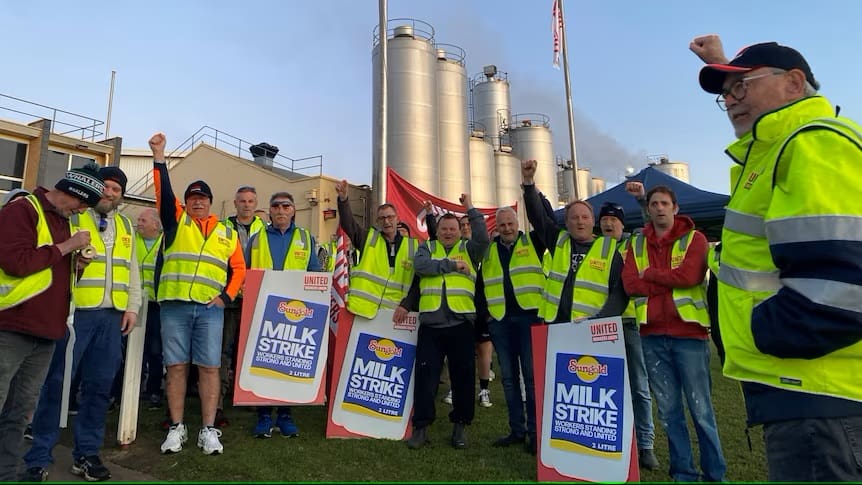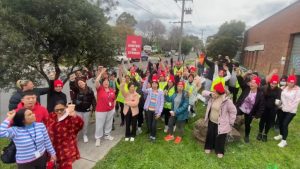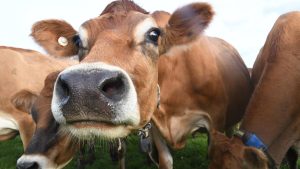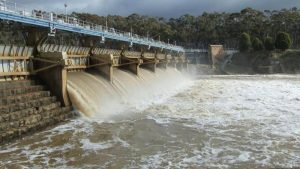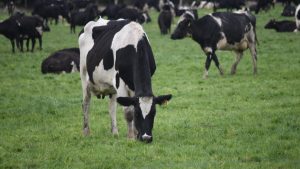
While the reasons might not be obvious to shoppers, supermarket aisles tell the story of why dairy industry workers who drive milk tankers or wrap cheese on factory floors have mounted coordinated strike action this week.
Milk that for nearly a decade sold for $1 per litre is now fetching $1.70 per litre, and a 700-gram bag of grated cheese has quickly risen in price to $10 a packet.
The sharp rise of such supermarket staples is adding to cost-of-living pressures and fuelling inflation.
Farmers who were on the brink of leaving the industry are now receiving record prices for their milk, and the workers who help turn that milk into a consumer item are now asking for a bigger share too.
That’s why a coordinated strike at the factories of four major milk processors has been called for this week.
That’s the main reason 1,400 workers at 13 sites across Victoria walked off the job on Wednesday and Thursday, joining milk tanker drivers for dairy giant Saputo who stopped picking up milk from farmers from 3am on Tuesday.
With workers on strike, farmers have missed important pick-ups, meaning tens of thousands of litres of milk has been poured down the drain.
The United Workers Unions is warning there may be shortages of dairy products in the coming days and weeks.
How did we get here?
The 2010s were an enormously difficult time for the dairy industry.
On Australia Day 2011, supermarket retailer Coles introduced $1 per litre milk and its major competitor Woolworths was quick to follow, putting a price limit on the dairy staple for 8 years.
By 2019, hundreds of dairy farmers had left the industry.
In the 12 years since $1 per litre milk was introduced, one-third of dairy farm businesses have quit and Australia’s total milk pool has plummeted by a billion litres.
Adding to the chaos for dairy, in 2016, milk cooperative giant Murray Goulburn collapsed and was sold to Canadian dairy giant Saputo.
Milk prices were cut again and farmers lost large amounts of money through Murray Goulburn share schemes.
In 2022–23 there are 36 per cent fewer bovine dairy licences — the licence needed to be a dairy farmer in Victoria — than a decade ago.
As dairy farmers left in droves, milk companies struggled to get enough Australian milk to supply butter, cream, milk, cheese, yoghurt, ice-cream and more to supermarket shelves.
These companies are now in a mad scramble each year to sign up enough dairy farmers to fill their factories, pushing farm gate milk prices to record high levels.
Milk prices which were as low as $4.75 per kilogram of milk solid (MS) in 2016 — how dairy farmers are paid — are now a minimum of $9.20kg/MS.
As a rough comparison, farmers have gone from getting 36 cents per litre to more than 70 cents per litre of milk.
But this comes at a time when global farm gate dairy prices are much lower than Australian values, putting pressure on dairy processors, who also rely on exports.
The price rise has slowed the number of dairy farmers exiting the industry and meant supermarkets have had to increase the price of dairy at the check-out.
Now factory workers and milk tanker drivers want their share.
Dairy factory workers say they are hurting, with cost of living increases hitting hard, and are striking to get better pay and conditions.
They also want job security after Saputo closed a dairy factory at Maffra this year, with the dairy giant telling shareholders it plans to shut more in Australia.
Another company, Fonterra, offered its workers 10.5 per cent increases to pay over three years, which has been rejected by unions.
Lactalis and Peters Ice Cream factories are the other companies where strikes are taking place.
Dairy farmers caught in the middle
It’s a stressful week for Victoria’s dairy farmers, who feel like they are caught in the middle of a fight between large multinational milk processors and powerful unions.
Dairy farmer Justin Johnston from Bundalaguah, near Sale in Victoria’s Gippsland district, had to tip out 14,000 litres of milk valued at about $10,000 because no-one came to pick it up.
He was told by his company he will get paid, but said it was still “gutting” to see his hard work effectively poured down the drain.
Victorian Country Hour understands more than 100,000 litres at multiple farms has been lost.
Lobby group Australian Dairy Farmers is asking unions and processors to sit down and work out a deal before more milk goes to waste.
But as the waste and losses add up, spilt milk could be just a fraction of the pain felt by workers, producers and the industry at large.
